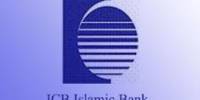Liquidity Management of IBBL
Liquidity management is the function of treasury department. This is the first priority of this department. Under this, this bank has to deal with sources of fund and how it will be implemented in the appropriate field. The bank has to appropriately manage maturity of both asset and liability. It is so important for a bank because if any liquidity crisis occurs beyond the statutory reserve and other liquidity sources, bank will face disastrous consequence like bank run which reduces the confidence of the client and this ultimately reduces the goodwill of the bank. So it is so crucial for the bank. Obviously IBBL always is in a strong position in maintaining customer confidence though large collection of deposit and investment. Local Office acts as head office of the bank where FAD (Financial Administration Division) is considered as a branch though it is situated in the local office. This FAD operates the “Feeding branch” which is responsible for maintenance of cash requirements, distribution and management among the branches across the country. There are mainly two “Feeding Branch” in Bangladesh which are located in Motijheel, Dhaka and Agra bad, Chittagong. Bangladesh Bank owns 9 branches across the countries which are located in each district and Bogura and these are acted as “Feeding Branch” for the absence of local office. If there are no branches of BB, then Sonali Bank acted as the “Feeding Branch”. So in this way IBBL maintains the cash requirements of its branches across the country. In IBBL liquidity management means having
- Ability of bank to meet maturating liability.
- Ability of the bank to attract deposit, meets its commitments.
- Ability of matching the maturity of assets & liabilities daily .
- Coping with any short term pressures.
- To meet liquidity needs and obligations to ensure the smooth running of business.
- Forecasting cash need and providing for these needs in the most cost-effective way.
- Reduces the adverse situation developing in the Market.
Credit Rating of the Bank
Credit Rating Information and Services Ltd.-CRISL was engaged by the bank for the purpose of rating the bank since 2002. According to BB guidelines credit rating became mandatory since January, 2007. CRISL submitted its report on the financial years 2002, 2003, 2004, 2005, 2006, 2007 and also 2008 and assigned A+ (Adequate Safety) for long term rating scale for 2002 and 2003 and upgraded the same to AA- for 2004 & 2005 and further upgraded the rating to AA (High Safety) in 2006, 2007, 2008. Financial institutions rated in this category are adjudged to be high credit quality. This level of rating indicates a corporate entity with a sound credit profile
And without significant problems. Risks are modest and may vary slightly from time to time because of economic conditions.
CRISL assigned ST-2 (High Grade) for short term rating scale for 2002 and 2003 and upgraded to ST-1 (Highest Grade) for 2004, 2005, 2006, 2007 and 2008. Financial institutions rated in this category means having highest certainty of timely payment. Short –term Liquidity including internal fund generation is very strong and access to alternative sources of funds is outstanding. Safety is almost like risk free Government short term obligations.
Liquidity Risk of IBBL:
Liquidity risk includes both the risk of being unable to fund its portfolio of assets at appropriate maturities and rates and the risk of being unable to liquid a position in a timely manner at reasonable prices.
- Causes of Liquidity Risk:
- Implications of liquidity deficit.
- Offering higher rate of profit to deposits.
- Shortage of financial resources to invest against commitments.
- Implications of liquidity deficit.
- Liquidity Shortage:-Total Demand for Liquidity > total supply of liquidity.
- Loss of competitiveness.
- Liquidity surplus:-Total Supply of liquidity > total demand for Liquidity
- Implications of liquidity surplus.
- Underutilization of financial resources.
- Lower income and higher cost.
- loss of competitiveness.
Why face/sources of liquidity problem
- Maturity mismatch” Bank takes large amount of short term deposit and then make invest in long-term (maturity mismatch).The problem related to maturity mismatch situation is that bank hold an unusually high proportion of liability subject to immediate payment.
- Sensitivity to rate change: When rate of profit by other banks on deposits rise/ Change of Profit rate of deposit.
- Loss of Public Confidence.
- Unanticipated change in cost of capital.
- Abnormal behavior of financial Market.
- Incorrect judgments and complacency.
- Conversion of Non-funded based limit into funded based.
- Severe deterioration of assets quality.
Key Issues in liquidity management in Islamic BankingComponents of Liquidity Statement:
Some of the major liquid assets what IBBL maintains are cash in hand and balances with other banks in current accounts, statutory cash reserve with the Bangladesh Bank, money at call and short notice. Here are the clarifications of the above components.
Asset
- Cash in Hand:
The most liquid asset of a bank is cash in hand which is known as first line defense. The demand of customers is immediately met by the bank with the cash balances with itself. The banker has to be very cautious, prudent and far-sighted in determining the quantum of cash to be maintained. In case he keeps cash balances much above his actual needs, he loses interest on that excess portion. If the cash reserves fall short of its requirements, the bank may find in an embarrassing position. Hence determination of the adequate size of cash balances is an important task faced by a bank. IBBL is also facing this situation. The amount of cash in hand is increasing day by day because of increasing amount of deposits with this bank. Here the amount of cash from the year 2005-09 is given below:
Cash in Hand
Table
Year | 2005 | 2006 | 2007 | 2008 | 2009 |
Amount of cash | 1285.56 | 1410.15 | 2907.14 | 3107.36 | 2480.77 |
Cash Reserve Requirement (CRR): 5.50%
Cash Reserve Ratio is calculated and maintained as per section 25 & 33 of the bank companies Act 1991. 5% of total deposits are kept in Bangladesh Bank which varies with the deposits. In case of crisis with cash in hand the bank goes to the central bank to meet the liquidity crisis. With effect from October 01, 2005 CRR is @ 5.00% of total Time & Demand Liabilities daily on bi-weekly average basis; but CRR position should not be less than 4.50% in any day as per BRPD Circular No.01 dated 12 January, 2009. As per guidelines given by Bangladesh Bank IBBL maintained CRR minimum @ 5.00% daily on bi-weekly average basis & CRR was not less than 4.50% in any day throughout the year. The amount of CRR is continuously increasing because of increasing amount of deposit. Now the CRR becomes 5.5%. As we know that CRR is dependent on the deposit collection. Now a chart is given from 2005-09 about balance with Bangladesh Bank:
Table-
Year | 2005 | 2006 | 2007 | 2008 | 2009 |
Required Amount (5%) | 5092.13 | 6296.85 | 8086.48 | 9885.94 | 11765.32 |
Actual Amount held with Bangladesh Bank | 14922.70 | 20319.45 | 9979.98 | 21088.84 | 31126.16 |
Surplus / (Deficit) | 9830.57 | 14022.59 | 1893.50 | 11202.89 | 19360.83 |
Maintained (%) | 14.65 % | 16.13% | 6.17% | 10.67% | 13.23% |
Statutory Liquidity Requirement (SLR): 10.50%
SLR of the Bank is 10.50% as like as other Islamic Banks as per Bangladesh Bank Letter No. BCD (P) 744 (23)/ 5 dated January 03, 1987. Here the components of Statutory Liquidity Ratio (SLR) are cash in hand including Foreign Currency, balance with Bangladesh Bank & its Agent Bank, investment in Shares of Bangladesh Shipping Corporation and Bangladesh Government Islamic Investment Bond. The Bank maintains following SLR requirement throughout the year.
SLR
Table-
Year | 2005 | 2006 | 2007 | 2008 | 2009 |
Required Reserve | 10184.25 | 12593.70 | 16172.96 | 19771.88 | 23530.65 |
Actual Reserve maintained | 20546.39 | 25725.39 | 34405.72 | 32784.45 | 45646.30 |
Surplus / (Deficit) | 10362.13 | 13131.69 | 18232.76 | 13012.57 | 22115.66 |
Maintained (%) | 20.17% | 20.43% | 21.27% | 16.58% | 19.40% |
- Balance with Other Banks:
Besides maintaining the statutory cash reserve with the Bangladesh Bank, IBBL also keeps its cash in other banks to meet up the liquidity crisis. Here cash is kept in different forms which are given below:
Table- Balance with Other Banks
Year | 2005 | 2006 | 2007 | 2008 | 2009 |
In Current Account | 217.57 | 442.11 | 1069.07 | 1242.91 | 949.37 |
| In Mudaraba Savings & MTDR Account with Other Islamic Banks / Financial Institutions | 1032.03 | 317.21 | 1284.77 | 75.82 | 4909.21 |
Sub Total | 1249.60 | 759.32 | 2353.85 | 1318.73 | 5858.58 |
Outside Bangladesh | 525.72 | 569.81 | 1658.47 | 4304.45 | 1819.79 |
Grand Total | 1775.32 | 1329.13 | 4012.32 | 5623.18 | 7678.37 |
- Investments in Shares & Securities:
This is another type of liquid asset that can be used to meet up the liquidity crisis. Here the investments in shares and securities of 2005-2009 are given below:
Investments in Shares & Securities
Table
Year | 2005 | 2006 | 2007 | 2008 | 2009 |
Investments in Shares & Securities | 3534.16 | 3557.76 | 20365.71 | 7 532.61 | 11136.61 |
Liability:
- Deposits and Other Accounts:
All the liquid assets are mainly necessary to fulfill the sudden demand of the depositors. The bank has to be always ready to meet the need of depositors. Here the amount of deposits is increasing significantly in IBBL and this bank has collected huge amount of deposits that six other conventional banks have not collected this huge amount of deposits. Here the amount of deposit from 2005-2009 is given below:
Deposits and Other Accounts
Table
Year | 2005 | 2006 | 2007 | 2008 | 2009 |
| Deposits and Other Accounts | 107779.42 | 132419.40 | 166325.28 | 200343.41 | 244292.14 |
Provision and Other Liabilities:
In IBBL there are also some other liabilities which must be backed by the liquid asset portion. Here from 2005 to 2009 the amount of other liabilities is given below:
Provision and Other Liabilities
Table
Year | 2005 | 2006 | 2007 | 2008 | 2009 |
| Provision and Other Liabilities | 6885.19 | 7826.18 | 10195.73 | 1 1564.94 | 10739.19 |
Liquidity Position of IBBL (At a Glance)
Table
Year | 2005 | 2006 | 2007 | 2008 | 2009 |
SLR Maintained (%) | 20.17% | 20.43% | 21.27% | 16.58% | 19.40% |
CRR Maintained (%) | 14.65 % | 16.13% | 6.17% | 10.67% | 13.23% |
*This actual SLR and CRR percentages remind us how strong position of IBBL in case of liquidity management.
Assessing & Managing Liquidity of IBBL
Sources & uses of funds basis:
- Net liquidity/Fund Position:
IBBL prepares daily position of funds considering total deposits, total Investments, investment in shares & approved securities, Balance with Bangladesh Bank, CRR, SLR, Balance with Sonali Bank as an agent of Bangladesh Bank, Cash in tills, Balance in FC clearing A/Cs, Deposits with others Banks (Short & term Deposit) etc to work out net surplus/shortage of fund on daily basis to assess the liquidity /Invest able funds of the Bank. All this components are described above.
- Maturity Profile Mismatch
A key issue that IBBL needs to focus on is the maturity of its assets and liabilities in different tenors. A typical strategy of a bank to generate revenue is to run mismatch, i.e. borrow/takes deposit short term and lend/investment longer term. However, mismatch is accompanied by liquidity risk and excessive longer tenor Investment against shorter-term deposits would put a bank’s balance sheet in a very critical and risky position. To address this risk and to make sure a bank does not expose itself in excessive mismatch, a bucket-wise (e.g. next day, 2-7 days, 7 days-1 month, 1-3 months, 3-6 months, 6 months-1 year, 1-2 year, 2-3 years, 3-4 years, 4-5 years, over 5 year) maturity profile of the assets and liabilities is prepared to understand mismatch in every bucket. We know that all of the shorter tenor assets and liabilities will not come in or go out of the bank’s balance sheet. As a result, banks prepare a forecasted balance sheet where the assets and liabilities of the nature of current, overdraft etc. are divided into ‘core and non-core’ balances, where core is defined as the portion that is expected to be stable and will stay with the bank; and non-core to be less stable. The distribution of core and non-core is determined through historical trend, customer behavior, statistical forecasts and managerial judgment; the core balance can be put into over 1 year bucket whereas non- core can be in 2-7 days or 3 months bucket.
Liquidity Indicator Approach
Many banks estimate their liquidity needs based on experience and industry averages. This often means using certain financial ratios or liquidity indicators. This ratio means changes in a bank’s liquidity position.
1.Cash Position Indicator:
Cash and deposits due from depository institutions is divided by total assets where a greater proportion of cash implies the bank is in a stronger position to handle immediate cash needs. Here the cash position indicator always shows increasing trend except 2007 and remains consistent.
Cash Position Indicator
Table
Year | 2005 | 2006 | 2007 | 2008 | 2009 |
Cash Position Indicator | 16.44% | 16.53% | 11.02% | 16.01% | 16.23% |
2. Capacity Ratio:
Here net loans and leases are divided by total assets which is really a negative liquidity indicator because loans and leases are often among the most illiquid assets a bank can hold. IBBL disburses majority amount in loans which can increase its income.
Capacity Ratio
Table
Year | 2005 | 2006 | 2007 | 2008 | 2009 |
Capacity Ratio | 71.68% | 71.02% | 69.96% | 73.56% | 72.90% |
3. Core Deposit Ratio:
Here core deposit is divided by total asset where core deposits are defined as small denomination accounts from local customers that are considered unlikely to be withdrawn on short notice and so carry lower liquidity requirements. This ratio is in good condition because at this bank has less possibility of facing liquidity crisis.
Core Deposit Ratio
Table
Year | 2005 | 2006 | 2007 | 2008 | 2009 |
| Core Deposit Ratio | 77.04% | 78.21% | 75.98% | 77.56% | 78.31% |
4. Deposit Composition Ratio:
Demand deposits are divided by time deposits where demand deposits are subject to immediate withdrawal via chque writing while time deposits have fixed maturities with penalties for early withdrawal. This ratio measures how stable a funding base each bank possesses, a decline in the ratio suggests greater deposit stability and therefore a lessened need for liquidity. Here we can see that the ratio is in reasonable condition and it is decreasing which suggests greater deposit stability.
Deposit Composition Ratio
Table
Year | 2005 | 2006 | 2007 | 2008 | 2009 |
Deposit Composition Ratio | 25.56% | 22.79% | 25.22% | 22.68% | 21.44% |
Ratio Analysis:
Liquidity Ratio:
This measures the short term ability of the enterprise to pay its maturing obligations and to meet unexpected needs for cash. Short term creditors such as bankers are particularly interested in assessing liquidity. The ratios that can be used to determine the enterprise’s short term debt paying ability are the current ratio and liquid assets to deposit liabilities.
Loan to Deposit Ratio:
Such ratio provides a simplified indication of the extent to which a bank is funding illiquid assets by stable liabilities. In Bangladesh BB sets rules that every bank can disburse maximum 82% of total deposit in loans and investments. IBBL is not moving in aggressive way to grant investment what we can realize from SLR and CRR percentage.
Loan to Deposit Ratio
Table
Year | 2005 | 2006 | 2007 | 2008 | 2009 |
Loan to Deposit Ratio | 81.72% | 80.58% | 80.49% | 84.03% | 83.05% |
Liquid Assets to Deposit Liabilities Ratio:
This indicates that how much liquid assets are available to meet up the immediate necessity of the depositors. This ensures the confidence of the depositors about the bank. In 2005, this ratio was highest because of lower investment opportunity. But from 2006-2009 the ratio is satisfactorily constant. This is a good sign for the bank because management has been able to hold the ratio constant which is a success of the bank. This ultimately helps to hold the customer confidence.
Liquid Assets to Deposit Liabilities Ratio
Table
Year | 2005 | 2006 | 2007 | 2008 | 2009 |
| Liquid Assets to Deposit Liabilities | 97.46 | 62.99 | 57.38 | 67.04 | 62.99 |
Loan to Adjusted Deposit Ratio:
The ratio incorporates the extent to which loans are being financed by medium and long-term debt and by shareholders funds less investments in subsidiaries, affiliates and fixed assets. These additional aspects are included in the denominator of the ratio. Such ratio takes into account the deficiencies in the loan to deposit ratio by considering the extent to which the majority portion of the institution’s business is funded by medium and long-term debt and free capital.
Loan to Adjusted Deposit Ratio
Table
Year | 2005 | 2006 | 2007 | 2008 | 2009 |
Loan to Adjusted Deposit Ratio | 82.72% | 84.51% | 84.35% | 82.82% | 96.16% |
Liquid Assets to Total Assets Ratio:
Liquid assets to total deposits must be calculated at month end on liquid asset holdings and total assets. How much assets are maintained in liquid form within the total assets that can be understood. So from this it can be easily realized that IBBL is slightly emphasizing more on maintaining liquid assets rather maintaining other long term assets.
Liquid Assets to Total Assets Ratio
Table-5.4
Year | 2005 | 2006 | 2007 | 2008 | 2009 |
Liquid Assets to Total Assets Ratio | 69.67% | 69.54% | 49.87% | 58.17% | 55.29% |
Legal reserve requirement:
Islamic banks in Bangladesh have to keep 10% of its total deposits as liquidity. Of this, 5% is required to be kept in cash with Bangladesh Bank and the rest 5% is to be kept either in approved securities or in cash (in case of problem with securities) with Bangladesh Bank. Legal reserve requirement for conventional banks is 18%. They have to keep 5% in cash with Bangladesh Bank and the rest 13% is invested in Bangladesh Bank approved securities. Traditional banks can earn interest on their deposits with Bangladesh Bank but Islamic banks can not since they cannot receive interest as earning. Compared to interest-based traditional banking, Islamic banks, in this case, are in disadvantageous position. However, Islami Bank Bangladesh Limited has been receiving interest against its deposit with Bangladesh Bank and crediting it to its Sadaqa fund (Islami Bank Foundation). It should be noted that the interest earning are not considered as bank income and added to profit. The proceeds are spent on welfare activities.
Lack of opportunity for profitable use of surplus funds:
The bank can invest their excess liquid amount in approved securities and or in other bank in crisis. Islamic banks cannot take this opportunity due to the existence of interest element in the transaction process
Apprehension of liquidity crisis and possibility of liquidity surplus:
Islamic banks have always left with a sizeable amount of cash as liquidity surplus. Conventional banks can borrow in the form of call money among themselves even at an exorbitant rate of interest.
Capital market investment:
Conventional banks can invest 30% of their total deposits in shares and securities. Islamic banks have their problem in this case as they avoid any transaction based on interest. Following examples may be cited for illustration. (a) Islamic banks do not purchase shares of companies undertaking interest-based business; (b) Shares of companies taking loan from commercial banks on interest are not also purchased by Islamic banks; and, (c) Islamic banks cannot purchase shares of companies involved in businesses not approved by Shari’ah. The above restrictive environment in the capital market of Bangladesh has limited substantially the investment opportunities for Islamic banks and hence the avenues of lawful earning. In the absence of Islamic money and capital market these banks cannot obtain funds from capital market at times of need.
Absence of inter-bank money market:
In spite of five Islamic banks have been functioning in Bangladesh, inter-bank money market within Islamic banks has not yet taken place. These banks can take initiative to form a money market among them. This may help minimising pparticularly the call money problem they are suffering from beginnings.
Predominance of Murabaha financing:
Predominance of Murabaha financing in the portfolio management of investment funds by the present day Islamic banks of Bangladesh has been a hot agenda of debate. One study shows that Islami Bank Bangladesh Limited, Al Arafah Bank and Social Investment Bank Limited have used 54%, 76% and 65% respectively of their investment funds by resorting to Murabaha mode (Hoque 1996, p.9). Murabaha though considered as a Shariah approved mode, the Islamic economists have traditionally prescribed for its limited application. Due to legacy of traditional banking, lack of appropriate legal protection and standard accounting practice in business, Islamic banks in Bangladesh find Murabaha financing as suitable and Mudaraba and Musharaka as difficult to apply
Depression of Profit:
Traditional banks can meet up loss arising from delay in repayment by the clients through charging compound interest. Islamic banks cannot do that. What it does it realises compensation at the rate of profit. But the compensation so realised is not added to the profit income rather credited to Sadaqa account i.e., amount meant for social welfare activities. This depresses profits of Islamic banks. This may place Islamic banks relatively in weaker position in terms of profitability compared to conventional banks Moreover, Islamic banks are to make a compulsory levy equivalent to 2.5% of its profit earned each year and credited to Sadaqa account, which also depresses banks’ profitability. This is unlikely the case with conventional banks.
Absence of legal framework:
Amendment of old laws and promulgation of new laws conducive to efficient operation of Islamic banks are sin qua non for its healthy growth. Countries introducing Islamic banking should create an enabling environment for Islamic banks by modifying existing laws and regulations. Islamic banks in Iran and Pakistan have their legal supports. Pakistan has provided legal support to float Participation Term Certificate and conduct Mudaraba transaction by replacing “The legal Framework of Pakistan’s Financial and Co-operative System” on June 26, 1980. The Banking Tribunal Ordinance and The Banking and Financial Services (Amendment of Law) Ordinance were passed in 1985 by amending seven Acts such as the Partnership Act, The Banking Companies Ordinance, the Wealth Tax Act, the Federal Bank Co-operation Act, the Income Tax Ordinance, The Registration Act and Capital Issues, 1974
SWOT Analysis
SWOT analysis is a strategic planning method used to evaluate the Strengths, Weaknesses, Opportunities, and Threats involved in a project or in a business venture. It involves specifying the objective of the business venture or project and identifying the internal and external factors that are favorable and unfavorable to achieve that objective. Here the structure of SWOT analysis is given below
SWOT Analysis Chart
Table
Internal Attributes of the organization
| Strengths
| Weakness
|
| Internal capabilities that may help a bank to Reach its objective | Internal limitations than may interfere a company’s ability to active its objective | |
External Attributes of the Environment | Opportunities | Threats |
| External factors that the company may exploit to its advantage | Current and emerging external factors that may be challenged for the company’s performance | |
Helpful Achieving the Objective | Harmful Achieving the Objective |
Explanation of SWOT
Following the SWOT analysis procedure I have performed the analysis of IBBL this will show the present condition of the bank. And also the future possibility of the bank will be identified.
SWOT Analysis of IBBL
Internal Attributes of the organization | Strength | Weakness
|
| ||
|
| |
External Attributes of the oooEnvironment | Opportunities | Threats |
|
| |
| Helpful Achieving the Objective | Harmful Achieving the Objective |
Maintenance of Rules and Restriction by IBBL
CAMELS Rating:
CAMELS rating are the supervisory rating of the bank’s overall condition. The CAMEL ratings system is made up of five components: capital adequacy, asset quality, management competence, earnings, and liquidity with the associated acronym. CAMEL ratings generally assess overall soundness of the banks, and identify and/or predict different risk factors that may contribute to turn the bank into a problem or failed bank. To bring and ensure the healthy conditions of the banks or to check the ‘bank run’ originated from a failure of a single bank, authorities review the different aspects of the banks. In Bangladesh, since the early nineties, the same 5 components of CAMEL have been used for evaluating the five crucial dimensions of a bank’s operations that reflect in a comprehensive fashion an institution’s financial condition, compliance with banking regulations and statutes and overall operating soundness. Recently, Bangladesh Bank has upgraded the CAMEL into CAMELS effective from June, 2006. After inserting ‘S’ or ‘sensitivity to market risk’, it is presumed that this off-site supervision technique of central bank would make it a more effective tool in rating banks. The CAMELS rating components, usually taken into consideration by the monetary authorities have the following weights: capital adequacy 20%, asset quality 20%, management 25%, earnings 15%, liquidity 10% and sensitivity to market risk 10%. Following is a description of the graduations of rating:
In the standard CAMELS framework, liquidity is assessed according to: volatility of deposits; reliance on interest-sensitive funds; technical competence relative to structure of liabilities; availability of assets readily convertible into cash; and access to inter-bank markets or other sources
of cash, including lender-of-last-resort (LOLR) facilities at the central bank. At present, conventional commercial banks’ deposits are subject to a statutory liquidity requirement (SLR) of 18.5 percent inclusive of 5.5 percent cash reserve requirement (CRR). The CRR is to be kept with the Bangladesh Bank and the remainder as qualifying secured assets under the SLR, either in cash or in government securities. Till date, SLR for the banks operating under the Islamic Shari’ah is 10.5 percent. Liquidity indicators measured as percentage of demand and time liabilities (excluding inter-bank items) of the banks indicate whether the banks have excess or shortfall in maintenance of liquidity requirements. The basic indicators of sound liquidity position are: deposits are readily available to meet the bank’s liquidity needs; assets are easily convertible into cash; compliance with SLR; and easy access to money markets etc.
CAMELS rating system has been viewed in light of the principles and practices of Islamic banking. Though all features of CAMELS are not repugnant or contradictory to the Shari’ah stance, there should be some separate provisions to make it conducive and proper to analyze the whole operation of the Islamic banks. Definitely, it should also assess the Shari’ah implementation status of the Islamic banks as well. But for BB restriction IBBL has adopted CAMELS rating procedure and it acquires strong position for many times where no supervisory response required.
Basel Ι:
The Basel Accord Ι was published in 1988 and is being followed by banks long time. But in Bangladesh Basel Capital Accord (Basel Ι) was adopted from 1996. Under this first Basel accord every bank must maintain minimum capital requirements. IBBL has adopted Basel Ι from the very first of establishment of this regulation in Bangladesh. IBBL always maintains significant amount of statutory reserve beyond the Bib’s requirements. This statutory reserve is included under core capital (Tier-1) according to the first Basel Accord. According to the following chart consistently statutory reserve is increasing as the amount of deposits is increasing day by day.SLR
Table
Year | 2005 | 2006 | 2007 | 2008 | 2009 |
Required Reserve | 10184.25 | 12593.70 | 16172.96 | 19771.88 | 23530.65 |
Actual Reserve maintained | 20546.39 | 25725.39 | 34405.72 | 32784.45 | 45646.30 |
Maintained (%) | 20.17% | 20.43% | 21.27% | 16.58% | 19.40% |
Basel ΙΙ:
The revised Basel framework (Basel- ΙΙ) was finalized in June 2004 which is popularly known as Basel ΙΙ. Subsequently the framework has revised up to June, 2006. The framework endorsed the adoption of capital allocation for operational risk in addition to market & credit risks and introduced comprehensive risk management practices by banks along with supervision and disclosure requirements. Bangladesh has provided a policy & guideline for implementing Basel Accord ΙΙ by the year 2008. Credit risk and market risk both are involved with liquidity risk because potential loss due to probability of violation of commitment by an obligor increases the possibility of liquidity crisis and market risk factors like stock prices, interest rates, foreign exchange rates, and commodity prices affect the liquidity condition of the bank because when the interest rate of the deposit falls depositors try to withdraw money to invest in better investment opportunity. Then liquidity crisis may occur. In IBBL Basel ΙΙ is implemented by a unit which is headed by 15 members for implementation of New Capital Accord. The Unit supervised the parallel run of Basel ΙΙ along with Basel Ι at IBBL from early 2009 and supervising full operation of Basel ΙΙ from 01 January, 2010. In IBBL both the credit risks and market risks are very insignificant here because as the follower of Basel ΙΙ this bank faces low amount of default against its huge general investment what can be realized from the following data.
Bad and Loss amount to Total General Investment
Table
Year | 2005 | 2006 | 2007 | 2008 | 2009 |
Bad and Loss amount to Total General Investment | 2.39% | 2.33% | 1.98% | 1.65% | 1.35% |
Stress Testing:
Bangladesh Bank executed stress testing about financial information for the first time of 48 commercial banks up to 30th June, 2009. This is a form of testing the stability of a given entity and also to choose scenarios and put them in the valuation model. Four types of risks are measured here which are credit risk, market risk, exchange rate risk and finally liquidity risk. Stress testing will be performed once in every 6 months. The main objectives of performing stress testing are managing risky exposures and helping diversification of those, monitoring the standard of service and also making sure of economic stability and fostering growth. If the depositors withdraw money at 2%-6% from the bank within five consecutive days, then what will be the liquidity condition of the bank-this is considered through stress testing. The stress test for liquidity risk evaluates the resilience of the banks towards the fall in liquid liabilities. The ratio “liquid assets to liquid liabilities” shall be calculated before and after the application of shocks by dividing the liquid assets with liquid liabilities. Appropriate shocks will have to be absorbed to the liquid liabilities if the current liquidity position falls at the rate of 10%, 20% and 30% respectively.
Liquidity Shock:
The ratio of liquid assets to liquid liabilities after a 10%, 20%, 30% fall in the later shall be calculated as
Table Liquidity Shock
Magnitude of Shock | 10% | 20% | 30% | |||
Year
| 2009 | 2008 | 2009 | 2008 | 2009 | 2008 |
Liquid Assets | 153887.31 | 134312.24 | 153887.31 | 134312.24 | 153887.31 | 134312.24 |
Liquid Liabilities | 244292.14 | 200343.41 | 244292.14 | 200343.41 | 244292.14 | 200343.41 |
Liquidity Ratio (%) | 62.99% | 67.04 % | 62.99% | 67.04 % | 62.99% | 67.04 % |
Fall in Liquid Liabilities | 24429.21 | 20034.34 | 48858.43 | 40068.68 | 73287.64 | 60103.02 |
Revised Liquid Assets | 129458.1 | 114277.9 | 105028.88 | 94243.56 | 80599.67 | 74209.04 |
Revised Liquid Liabilities | 219862.93 | 180309.07 | 139263.26 | 160274.73 | 171004.49 | 140240.37 |
Liquidity Ratio after shock (%) | 58.89% | 63.38% | 75.42% | 58.80% | 47.13% | 52.92% |
Here it can be proved that due to the fall of liquid liabilities consecutively by 10%, 20%, 30% liquidity ratio also falls. So if the liquid liabilities decrease, the bank is going to face liquidity shock because investment disbursement in short term is not decreasing. As a result significant amount of deposit collection must be increased or investment disbursement must be reduced. Here this stress testing is based on IBBL where only data of 2008-2009 is taken into consideration. If liquid liabilities fall in this way, it is urgent to try to absorb the shock. But IBBL is not at all in this position because of higher rate of maintaining cash in hand.
Findings of IBBL Regarding Liquidity Management
Now IBBL is a leading bank in Islamic banking area in Bangladesh and we know that it was the pioneer of Islamic banking trend in Bangladesh. From the above analysis we have seen that IBBL is maintaining a good liquidity position. It always maintains SLR and CRR above the requirement ratio. So it never faces any liquidity crisis. But in spite of IBBL has some short comings in the liquidity management. Now some problems are given below:
- As we know that IBBL maintains huge amount cash in hand which are kept as idle bank has failed to utilize proper investment opportunity.
- IBBL cannot utilize proper investment opportunity because of proper forecasting about investment.
- As Riba (interest) is prohibited IBBL cannot involve in inter bank transaction.
- Also IBBL cannot take part in purchasing Treasury bill for lack of Islamic Money Market.
- IBBL is not attentive enough in marketing and advertisement in this competitive edge.
- The periodic review program is comparatively not strong enough for which huge liquidity is kept as idle.
Recommendations:
Islami Bank Bangladesh Ltd. has been able to establish its own presence with a continued expansion geared by increasing acceptance by the people. To continue this dynamic expansion IBBL needs to adopt modern strategy in every banking department of cope with the competitive banking sector. And at the same time it must be ensured that IBBL is following the Islamic rules and principles. In Bangladesh there is no Islamic money market and other laws regarding banking sector. So IBBL needs to think about its alternative regarding liquidity management. Here some suggestions are given below what should be achieved to be more efficient in liquidity management.
- As IBBL maintains huge amount of cash in hand it cannot utilize proper investment opportunity. So IBBL should emphasize more on utilization of investment opportunity to increase it earning
- It should give more importance on research & development to launch new product to cope with increasing competition
- Board of Directors of IBBL should ensure the selection and appointment of qualified and competent management to administer the liquidity management function
- Board of Directors should review periodically, but at least once a year, the liquidity management program
- Developing lines of communication to ensure the timely dissemination of the liquidity and funding policies and procedures to all individuals involved in the liquidity management and funding risk management process
- Monitoring economic and other operating conditions to forecast potential liquidity needs
- IBBL should emphasize on promotion of the image of Islamic bank as PLS banks
Conclusion:
Finally it can be said that liquidity management is one of the most essential part of all banks. Like others IBBL also gives emphasis on this section. Through properly handling this section a large problem is solved. That is holding customer confidence. On this the image of the bank is highly correlated. Throughout the report it is seen that liquidity management position is so strong and satisfactory. As a result IBBL achieves ST-1 rating from CRISL and it holds its performance from couple of years. Also CAMELS rating shows that this bank is performing in well manner. Compared to any other banks IBBL is performing in liquidity management in ideal way. Its risk management department is acting in a well organized manner which can be realized from the strict maintenance of Basel ΙΙ. But IBBL should give more importance in adopting competitive strategy like I-Banking and also in employee efficiency. If the employees are satisfied then the banks’ performance will be more spontaneous and smooth and consistent. This bank also should give importance in marketing strategy. For liquidity management perspective IBBL maintains huge SLR in excess of requirement. It should more careful about its investment opportunity. This can increase its earning in a dynamic way because IBBL is the collector of highest deposit. So IBBL can play a strong role here. As we know that this bank has the restriction of taking Riba (Interest), this bank can’t invest in T-bill and bond. So as a one of the most profitable bank Govt. should consider to establish more accurate Islamic law and principles for the welfare of the economy which supports the Islamic Shari’ah.. So following this IBBL as a specialized bank contributes a lot in the economy by fostering its growth from any other banks in our country. Then lastly it can be said that though there are some limitations of the bank IBBL is trying to encourage socio economic uplift and financial services to the low income community particularly in the rural Ares.
















